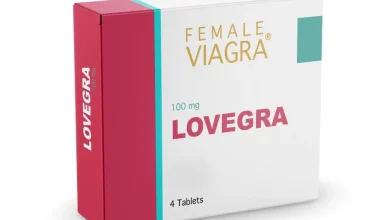How COD Sensors Are Revolutionizing Wastewater Monitoring in Industrial Operations

Table of Contents
As industrial operations continue to expand and evolve, so does the impact they have on the environment, particularly in terms of water quality. Wastewater produced by various industries can contain high levels of organic contaminants that, if left untreated, can lead to severe environmental consequences. One of the most effective ways to monitor and treat wastewater before its discharge is through Chemical Oxygen Demand (COD) sensors. These sensors are revolutionizing the way industries approach wastewater monitoring, treatment, and compliance with environmental regulations.
In this blog, we’ll explore how cod sensor are transforming wastewater management in industrial operations and how their application can lead to more sustainable, cost-efficient, and environmentally responsible practices.
What Is Chemical Oxygen Demand (COD)?
Before diving into the specifics of how COD sensors function, it’s essential to understand what Chemical Oxygen Demand (COD) means. COD is a key parameter used to determine the amount of oxygen required to chemically oxidize organic compounds in a water sample. High COD levels indicate the presence of a significant amount of organic pollutants, which consume oxygen when breaking down. If untreated wastewater with high COD is released into natural water bodies, it depletes the available oxygen, leading to detrimental effects on aquatic life, such as fish kills and overall ecosystem degradation.
COD is an important indicator of wastewater quality, especially in industries that produce large amounts of organic waste, such as food processing, chemical manufacturing, and pharmaceuticals. Ensuring that this wastewater is treated effectively is critical to maintaining water quality and protecting the environment.
What Are COD Sensors?
COD sensors are devices designed to measure the concentration of organic pollutants in wastewater by monitoring its COD levels. They provide real-time data on the organic load of water, which is crucial for optimizing treatment processes. These sensors are used to detect the amount of oxygen required to oxidize organic matter, giving operators valuable insight into the quality of wastewater before it is released into natural water sources.
COD sensors operate on a variety of principles, including electrochemical and optical technologies. While electrochemical sensors measure the oxidation of organic material using an electrical current, optical sensors use light absorption to estimate the organic content of wastewater. Both types of sensors are accurate, efficient, and essential for continuous monitoring.
How COD Sensors Benefit Industrial Wastewater Treatment
1. Continuous Monitoring and Real-Time Data
The key advantage of COD sensors is their ability to provide real-time monitoring of wastewater quality. Traditionally, wastewater monitoring was done through periodic sampling and laboratory analysis, which could take hours or days. This created a gap between data collection and the time it took to implement corrective actions, allowing potentially harmful wastewater to be discharged into the environment.
With COD sensors, operators can continuously monitor the organic content of wastewater, receiving instant feedback on its quality. This real-time data helps in making quick decisions about whether additional treatment is necessary before discharge. If COD levels exceed acceptable limits, operators can adjust treatment processes immediately to ensure that wastewater is properly treated and compliant with environmental standards.
2. Optimizing Treatment Processes and Reducing Costs
Wastewater treatment processes, such as aeration and chemical dosing, are often energy-intensive and costly. In conventional systems, these processes are often run based on fixed schedules or assumptions about the organic content of wastewater. However, this can lead to inefficiencies, such as overuse of chemicals or energy when the organic load is lower than expected.
COD sensors help to optimize wastewater treatment by providing accurate, real-time measurements of COD levels. By adjusting treatment processes based on actual data, industries can use fewer chemicals and reduce energy consumption when organic loads are low. Conversely, when COD levels are high, treatment processes can be ramped up to ensure effective pollutant removal.
This optimization not only improves the efficiency of wastewater treatment but also reduces operational costs, as industries can avoid unnecessary expenditures on chemicals, energy, and labor.
3. Ensuring Regulatory Compliance
Environmental regulations governing wastewater discharge are becoming stricter as governments and regulatory bodies continue to prioritize the protection of water resources. Many industries are subject to strict COD limits set by regulatory agencies to prevent organic pollution from contaminating natural water bodies. Exceeding these limits can result in hefty fines, legal liabilities, and reputational damage.
COD sensors help industries comply with these regulations by continuously monitoring the organic content of wastewater. Real-time monitoring allows operators to ensure that wastewater meets regulatory standards before being released into the environment. If COD levels exceed allowable limits, corrective measures can be taken immediately to bring the water into compliance, thereby avoiding penalties and ensuring the company remains in good standing with regulators.
4. Early Detection of Pollutant Surges
In industrial settings, fluctuations in wastewater quality can occur due to changes in production processes, maintenance activities, or unexpected spills. These fluctuations can result in sudden surges in organic load, overwhelming the treatment system and potentially leading to the release of untreated or inadequately treated wastewater.
COD sensors enable early detection of these surges by providing continuous monitoring of wastewater quality. If there is a sudden spike in COD levels, operators can adjust treatment processes to accommodate the increased organic load. This proactive approach helps prevent system overloads and ensures that treatment is effective, even during unexpected changes in wastewater composition.
5. Protecting the Environment and Promoting Sustainability
Industrial wastewater treatment plays a significant role in sustainability by preventing pollution and protecting aquatic ecosystems. When untreated wastewater with high COD levels is discharged into rivers, lakes, or oceans, it can deplete oxygen levels and disrupt local ecosystems. By using COD sensors to monitor wastewater quality and ensure it meets environmental standards, industries can significantly reduce their environmental impact.
COD sensors contribute to sustainable water management by helping industries optimize their treatment processes, reduce resource consumption, and protect natural water resources. This, in turn, contributes to a more sustainable future by minimizing the negative effects of industrial operations on water quality and aquatic life.
Applications of COD Sensors in Various Industries
COD sensors are used across a wide range of industries to monitor and treat wastewater. Some of the key industries that benefit from these sensors include:
-
Food and Beverage: The food industry produces large amounts of wastewater, often containing organic material from food processing, cleaning, and production activities. COD sensors are used to monitor the organic load and ensure that the wastewater is treated to meet discharge standards.
-
Chemical and Pharmaceutical: These industries generate wastewater containing both organic and chemical pollutants. COD sensors help monitor the organic content of this wastewater and ensure it is treated effectively before being released into the environment.
-
Textile: The textile industry uses dyes and chemicals in the production process, resulting in wastewater with high COD levels. COD sensors help ensure that this wastewater is treated to reduce its environmental impact.
-
Pulp and Paper: This industry generates wastewater that contains organic materials from wood pulping and paper production. COD sensors are essential for monitoring and treating this wastewater to protect water quality.
-
Municipal Wastewater Treatment: Municipal treatment plants use COD sensors to monitor incoming and outgoing wastewater, ensuring that treated water meets regulatory standards and is safe for discharge.
The Future of COD Sensors in Wastewater Monitoring
As the demand for more sustainable practices in wastewater management grows, COD sensors are likely to become even more advanced. Future developments may include improved accuracy, lower costs, and better integration with other technologies such as Internet of Things (IoT) and artificial intelligence (AI). These advancements could further enhance the ability to monitor wastewater in real time, providing more actionable insights and automating treatment processes to improve efficiency and sustainability.
For example, the integration of AI could enable predictive analytics, allowing wastewater treatment systems to anticipate changes in organic load and adjust processes accordingly before problems arise. IoT-enabled COD sensors could provide remote access to real-time data, enabling operators to monitor wastewater quality from anywhere in the world.
Conclusion
COD sensors are transforming the way industries approach wastewater treatment. By providing real-time monitoring of organic pollutants, these sensors help optimize treatment processes, ensure regulatory compliance, and reduce environmental impact. In an era where sustainability is a priority, COD sensors are playing a key role in helping industries minimize their carbon footprint and protect water resources.
As technology continues to evolve, the role of COD sensors in wastewater monitoring will only continue to grow, leading to more efficient, cost-effective, and environmentally responsible industrial operations. Through their widespread adoption, industries can contribute to the preservation of our planet’s water resources and ensure that future generations inherit a cleaner, healthier environment.




